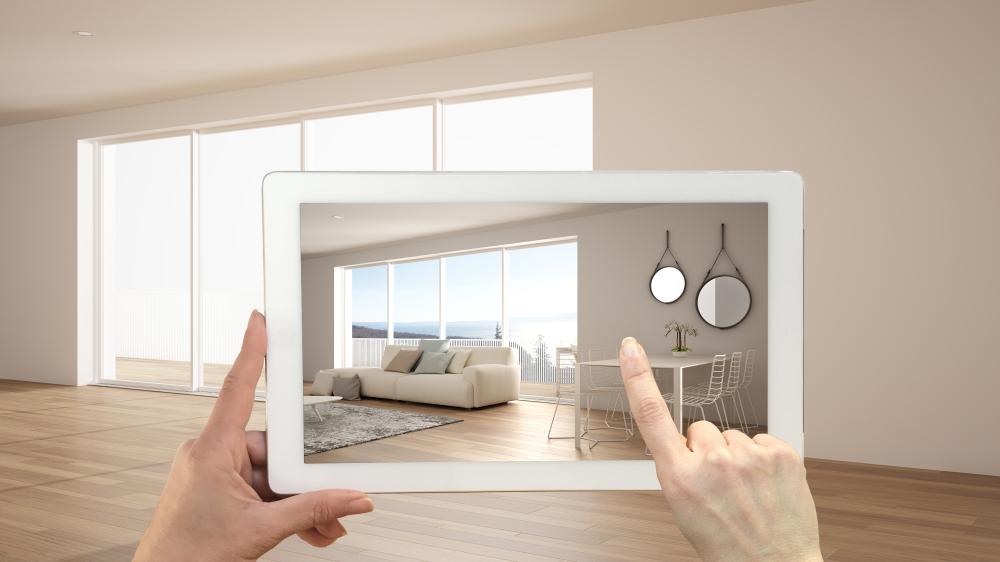
As Online Shopping Continues To Dominate, Brands Deploy Creative Visual Commerce
August 28, 2021
Throughout COVID-19, visual commerce has become increasingly popular as brands realize how beneficial it is for ecommerce. The visual marketing tactic can include everything from video content to augmented reality. Consumers are more and more willing to forgo brick-and-mortar experiences if they can have meaningful engagement through visual commerce, with Retail Customer Experience noting, “The digital phenomenon means more shoppers are giving up the opportunity to see a product in person before they buy it. That fundamental benefit of in-store shopping is one that retailers and brands must focus on replicating [with visual commerce] in order to provide a seamless online experience.” This shift in shopping behaviors from consumers has led to increased use of visual commerce by brands.
Many brands, including furniture companies and fashion retailers like Ikea, Joybird and Francesca’s, are implementing creative, effective visual assets that inspire shoppers and, ideally, entice them to buy.
Furniture Brands Are An Ideal Fit For Visual Commerce
In 2020, furniture and homeware ecommerce revenues in the U.S. are predicted to surpass $45 billion. The use of visual commerce with furniture is one of the reasons that younger generations are comfortable buying big ticket items like couches online.
The IKEA website implements a number of different visual commerce tools, including content marketing, a desktop planning tool and an app. Home furnishings are a natural fit for visual commerce — people want to see their possible furniture purchases styled and understand how they will fit in their homes. IKEA’s website offers shoppable stories like “ready for school” and has a room planning tool that lets shoppers place different items from throughout the store in a measured space, similar to a blueprint. The IKEA Place app shows consumers how certain IKEA furniture pieces look in their homes, virtually, using their phone cameras.
Joybird, a primarily direct-to-consumer (DTC) furniture retailer, offers consumers the opportunity to see different fabric types and colors on their products, and also has a “customer hall of fame” a gallery of photos from customers showing the many ways they have styled their Joybird furniture. User generated content (UGC) can be a very effective visual commerce tool, bringing authenticity and trust to a brand.
Visual Commerce For Fashionistas Includes AR And Lookbooks
A key driver of visual commerce is the ability to present products in such an alluring way that consumers are enticed to buy without seeing the items in-person. Francesca’s, a clothing retailer, goes beyond just the basic grid of photos that many retailers default to, and instead creates lookbooks inspired by places, moods, seasons and more. Zmags, a content hub, explains, “Digital lookbooks rely heavily on imagery to engage shoppers, and are often the first thing shoppers see on a page. To keep shoppers clicking through to the purchase, they must be attention-grabbing and visually exciting.” By foregoing the traditional way of presenting images, Francesca’s lookbooks offer consumers a more dynamic and visually pleasing experience that is also shoppable.
AR experiences are becoming increasingly common among fashion retailers, allowing shoppers to match shoes to a dress virtually or visualize a complete look in 3D. Even before COVID-19, fashion brands have relied on social media platforms to help execute their visual commerce activations. Dior worked with Instagram during Fashion Week in 2019, deploying an AR filter with Dior sunglasses and headbands that users could try on. Although perhaps not as seamless as visual commerce built into existing websites, a Dior spokesperson noted “The filter can also be tried by someone who sees a friend using it on Instagram Stories, which means Instagram AR filters are basically designed to go viral. They represent a huge growth opportunity.”
Beyond just pictures, visual commerce offers beautiful, shoppable, integrative online experiences, and visual commerce is going to keep evolving, particularly as consumers continue to rely on ecommerce and brands hope for strong return on visual investment (ROVI).
Are You Looking For New Ways To Transition Your Brand To A More Digital Approach?
Digital Media Solutions® (DMS) helps brands flourish by offering calculated engagement, deploying a robust database of consumer intelligence to develop scalable and reliable digital performance marketing campaigns that engage consumers and grow businesses.

